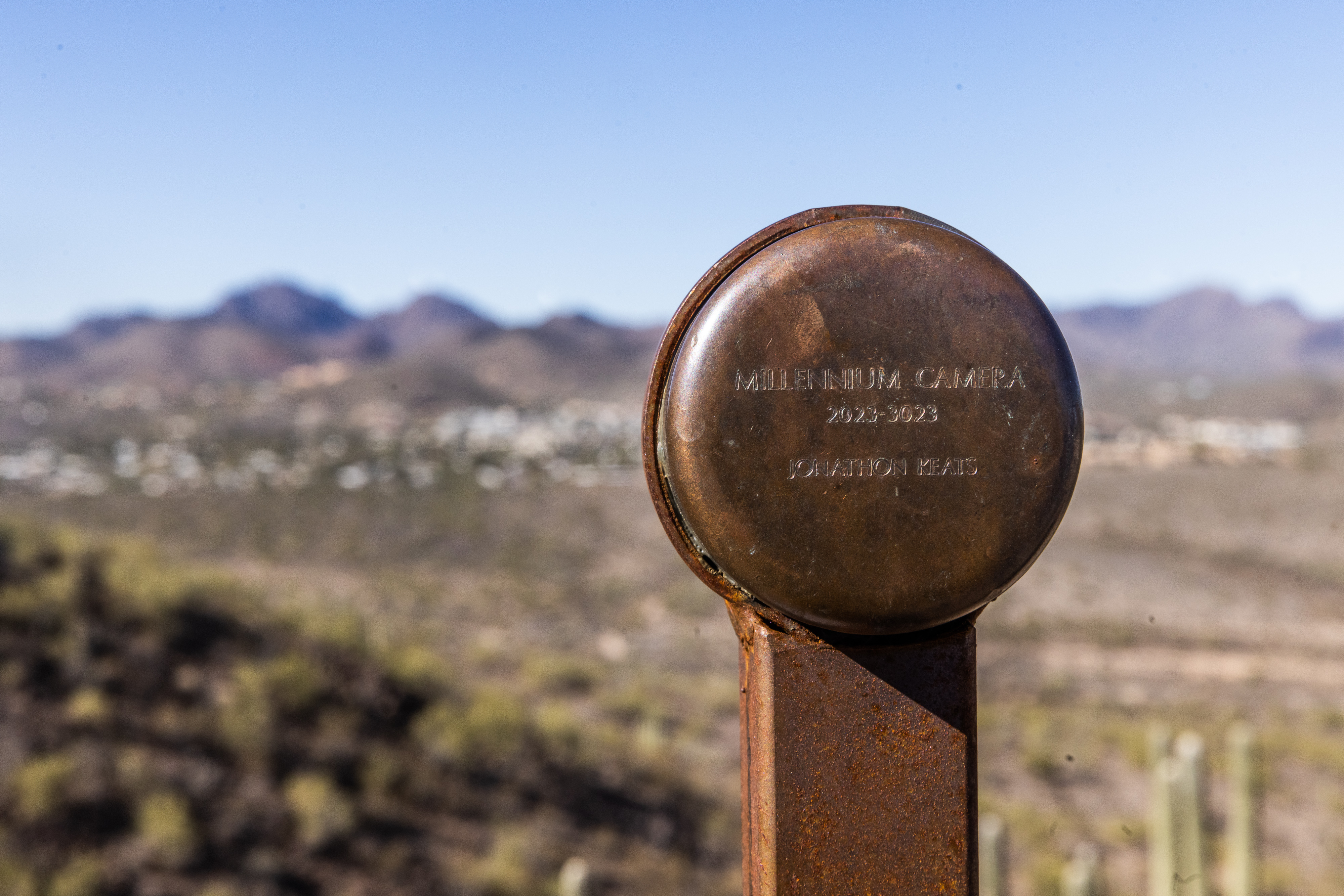How will the world change over the next 1,000 years? Unless you happen to hold the keys to time travel or immortality, it’s a question that none of us will live to know the answer to. But in Tuscon, Arizona, an experimental philosopher has created the Millennium Camera, a device that hopes to capture it all.
The idea of taking an image over the course of 1,000 years was thought up by University of Arizona research associate Jonathon Keats. His design is relatively simple for a camera; it consists of a pin-sized hole in a thin sheet of 24-karat gold, through which light can hit a small copper cylinder that sits atop a steel pole.
Inside is a light-sensitive surface coated in thin layers of the oil paint pigment rose madder, which will fade with the light, though whether this will happen at the correct rate is something of an educated guess.
With the help of researchers from the Desert Laboratory on Tumamoc Hill, the camera was installed next to a bench overlooking the Star Pass neighborhood in Tuscon. There, visitors are encouraged to sit and think about the future.
However, even with a carefully designed camera, there’s no guarantee that anyone in the future will get to see the image it could theoretically produce.
“One thousand years is a long time and there are so many reasons why this might not work,” Keats said in a statement. “The camera might not even be around in a millennium. There are forces of nature and decisions people make, whether administrative or criminal, that could result in the camera not lasting.”

The camera overlooks the distant hills in Tuscon, Arizona.
Image credit: Christopher Richards, University of Arizona Communications
But if it does happen to survive, Keats has some ideas about what it might show. Whilst the landscape features like hills will most likely appear mostly sharply, there will be a blur to features that change more easily, like buildings.
It’s also important that the camera isn’t opened before the 1,000 goal: “If we open in the interim, then it diminishes the imagining that we need to be doing.”
Keats hopes that the camera will encourage people to reflect on how best to plan for the future, taking into account the growth of populations and with it, our relationship with the natural environment.
“Most people have a pretty bleak outlook on what lies ahead,” said Keats. “It’s easy to imagine that people in 1,000 years could see a version of Tucson that is far worse than what we see today, but the fact that we can imagine it is not a bad thing. It’s actually a good thing, because if we can imagine that, then we can also imagine what else might happen, and therefore it might motivate us to take action to shape our future.”
Keats is planning on installing further cameras in Chongqing, China, Griffith Park in Los Angeles, and the Austrian Alps. “This project depends on doing this in many places all over the world,” he said. “I hope this leads to a planetary process of reimagining planet Earth for future generations.”
Source Link: This Camera Will Spend 1,000 Years Taking An Image Of The Arizona Desert